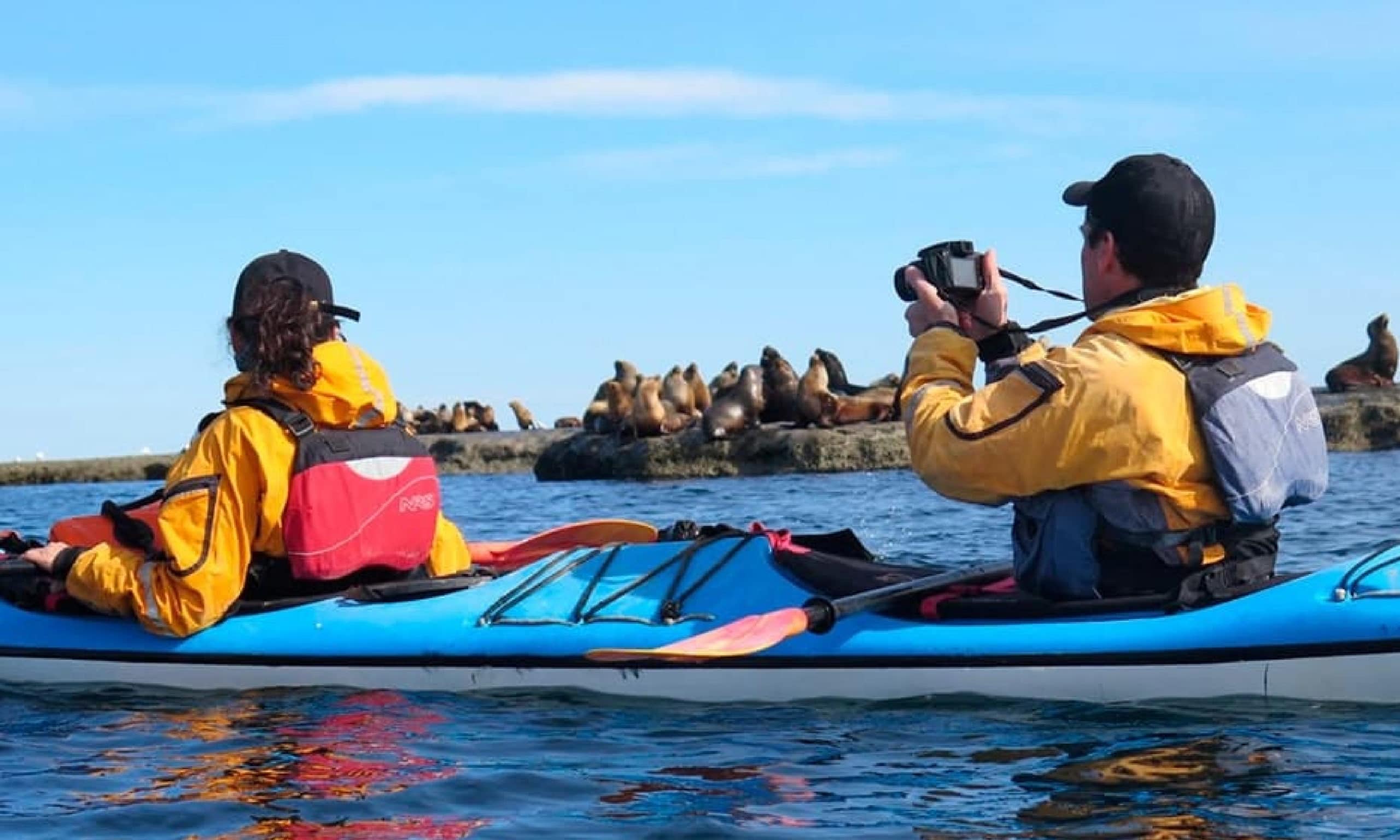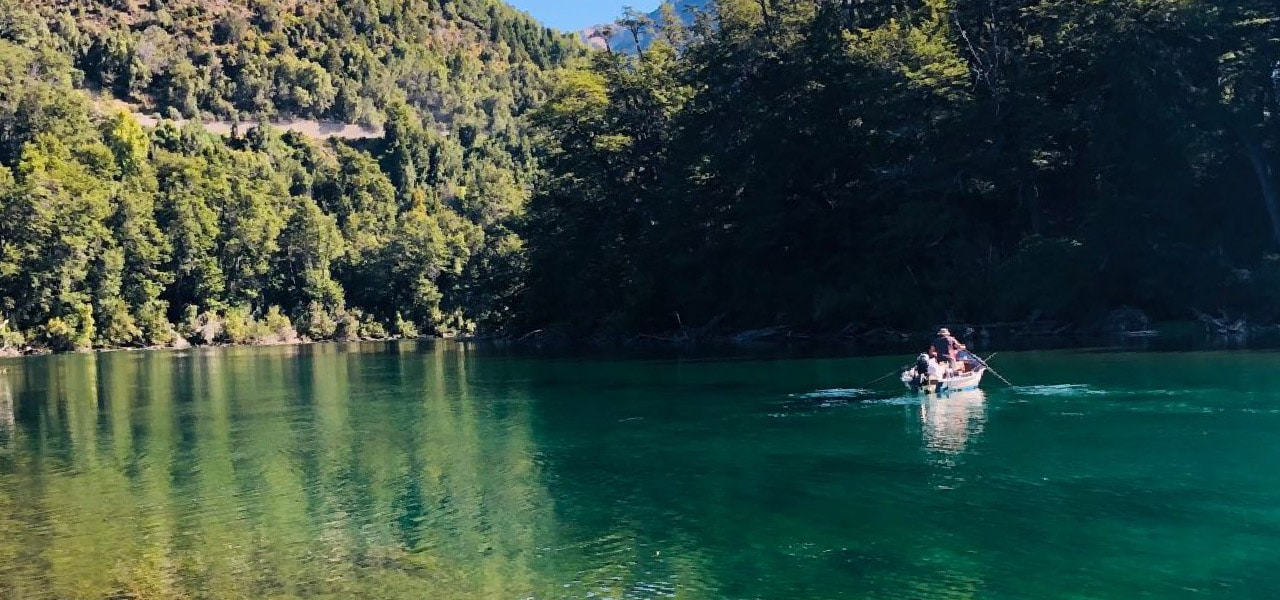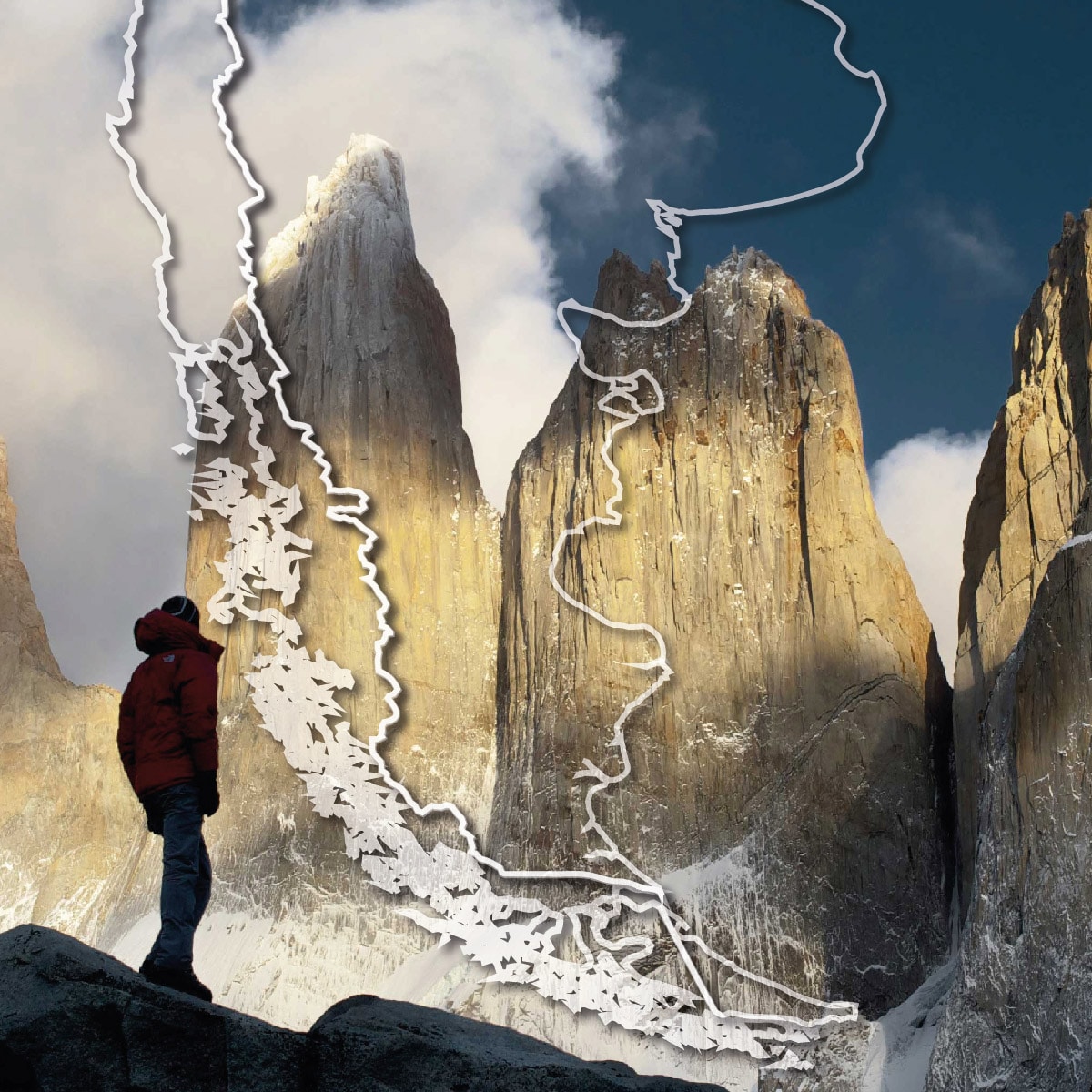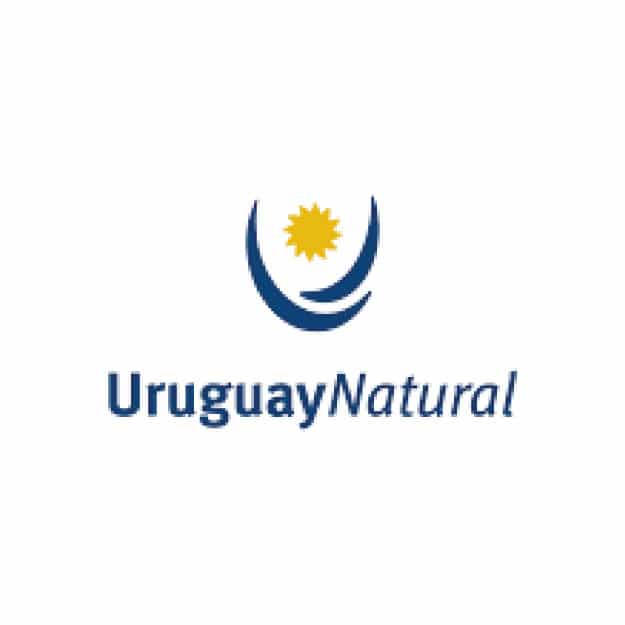Main National Parks in Patagonia, Argentina
No doubt, the Argentinian Patagonia is a must-see when you visit Argentina. Of course, it´s a place full of wonderful landscapes, but also with wonderful sea life, incredible glaciers, famous mountains, and many national parks to discover. Some of them are very famous, like the Parque Nacional Los Glaciares where you can see the incredible Perito Moreno Glacier, or the Tierra del Fuego National Park in Ushuaia, with all the magic of the end of the world. But there are more options, very interesting to know. Let´s start for the northern area in Patagonia:
National Parks in Patagonia: Laguna Blanca National Park
The Laguna Blanca, 1,700 hectares and about 10 meters deep, is one of the most important bodies of fresh water in the region, so many plants and animals find there a unique environment. It has also been a significant place for the native communities and also for the Creole settlers, during their passage to the summer grazing sites.
It is a place of strong and dry winds, blowing mainly from the west, and heavy snowfall during the winter months. The plants in the protected area are characterized by their low height, by having spines and thorns, and their deep roots. The Park preserves samples of terrestrial communities of peach, neneo, molle, and important sectors with grasslands of coirón, a grass that grows in compact yellowish bushes.
Many aquatic birds live here taking advantage of the body of water, such as plovers, flamingos, and silver macaws. The small aquatic frog of the Laguna Blanca used to live in the lagoon, but today its conservation depends on the nearby lagoons. Chinchillones, pumas, foxes, choiques and condors also inhabit the area.
National Parks in Patagonia, Argentina: Nahuel Huapi National Park
In 1903 the Expert Francisco Pascasio Moreno donated to the Argentine national State an area of three leagues located in the area of Puerto Blest, in the province of Río Negro, on the condition that they are preserved intact and for the benefit of future generations. These lands would become in 1934 the Parque Nacional del Sud: the first national park in Latin America, currently known as Nahuel Huapi. The protected area was also able to host the first forest nursery in Argentina, today consolidated as an internationally distinguished botanical garden.
To visit Nahuel Huapi National Park, you have to reach Bariloche and from there enjoy this unique National Park in Patagonia.




National Parks in Patagonia, Argentina: Los Arrayanes National Park
Los Arrayanes National Park preserves a magnificent sample of an old southern myrtle forest, possibly one of the best known in Argentina. In addition, forests of coihues and ñires flank the Quetrihué peninsula, which enters like a giant tongue at the northern end of Lake Nahuel Huapi.
In the lagoons in the center of the peninsula, called Hua Huan and Patagua, the huillín, an otter at risk of extinction, has been recorded. Among the birds, the Pythian woodpecker, the Araucanian whirlpool, and the Cachaña stand out, the only parrot in the Patagonian forest and the one with the most southern distribution in the world.
On islands near the Park is the imperial cormorant subspecies that live near lakes.

How to visit Los Arrayanes National Park?
Well, you have to reach Bariloche, and once there, you can go by lake excursion, from San Carlos de Bariloche (Puerto Pañuelo) and Villa La Angostura (La Mansa and La Brava ports). And on foot or bicycle, from Villa La Angostura, which is connected with San Martín de los Andes through RN 234 and RN 231 (111 km), and with Bariloche through RN 231 and RN 237 (77 km). Villa La Angostura is a beautiful small village you can combine with Bariloche.

National Parks in Argentina: Lanin National Park
In addition to the emblematic and imposing Lanín volcano that dominates the landscape at 3,776 meters above sea level, the protected area includes some 24 lakes. Here an important sample of the Patagonian Forest and several species of plants exclusive to the region are preserved.
Representative trees include the araucaria, the pellín oak, and the raulí. The slopes of the mountains are covered by forests of lengas and coihues. In the lower and more humid areas, more varied and exuberant vegetation grows, the so-called Valdivian Forest. The fauna is represented by pumas, foxes, and the mountain monkey, among mammals; and the great churrín, the condor, the reddish-tailed harrier, and the fío fío wigeon as examples of birds.
How to visit the Lanin National Park?
You have to reach San Martin de Los Andes, a small village located 263 km from Bariloche. A good idea could be to enjoy the excursion to San Martin de los Andes via 7-lakes and then stay in San Martin for a few days to enjoy the Lanin National Park.
National Parks in Patagonia, Argentina: Los Alerces National Park
Well, it´s one of my favorites. A very untouched natural area in our Patagonia. Los Alerces National Park contains the largest Valdivian jungle sector on Argentine soil. In its lush and ancient forests are the southernmost representatives of coligüe cane, arrayán, coihue and larch. The oldest known larch is found in the North Arm of Lake Menéndez.
Among the vertebrate animals, there are mammal species such as the pudu, the huiña cat, some of the main populations of huemul; birds such as the torrent duck and the Araucanian pigeon; and amphibians such as the larch frog, a species that only live on one island in Lake Menéndez.
How to visit Los Alerces National Park?
You have to reach Esquel and from there visit the amazing park. From the city of Esquel, in Chubut, by RN 259 and RP 71 to Villa Futalaufquen, where the Administrative Center of the Park is located (52 km). Also from Esquel you can access the southern part of the protected area, by RN 259 to Trevelin and the road that leads to the Futaleufú Hydroelectric Complex (45 km).
From Trevelin you enter through the Centro del Parque cover taking the RP 71 (24 km). From El Bolsón, in Río Negro, you can reach the north cover of the protected area by RN 40 and RP 71 (105 km).
National Parks in Patagonia, Argentina: Lago Puelo National Park
With white winters that cover the hills, a turquoise lake, and various greens for being a transition zone between the Andean Patagonian forest and the Valdivian jungle, this jewel of Patagonia invites you to sharpen your senses. Lago Puelo National Park was created in 1971 as an independent protected area, since it was previously an annex to Los Alerces National Park.
It is part of the Andean Region of Parallel 42 °, very close to the border with Chile, and due to its proximity to the town of El Bolsón it witnessed the hippie movement in Argentina, which raised among its premises the connection of people with nature.
How to visit Lago Puelo National Park?
You have to reach El Bolson, and from there visit this wonderful national park
National Parks in Patagonia, Argentina: Lihue Calel National Park
With a significant history of human occupation, the Lihué Calel Sierras, of volcanic origin and with just 590 meters on its highest hill, favor a humid microclimate that contrasts with the aridity of the surrounding plain. This contributes to a great diversity of local flora species to flourish.
40% of the plant species in the province are found in these mountains. The Pampean daisy, a legume, and the melosilla are exclusive plants here. There are also small caldén groves, representatives of the Espinal, accompanied by the shadow of a bull and alpatacos. In 2003 the park was expanded to its current surface, incorporating neighboring salt flats, including Salitral Levalle, with species adapted to the particular local conditions. The fauna is represented by guanacos, gray foxes, pumas and maras, among the mammals; and rhea and martinetas among the birds. Endangered species such as the crowned eagle, the peregrine falcon, the yellow cardinal, the lesser pichiciego and the tortoise are also protected.
National Parks in Patagonia, Argentina: Marino Costero Patagonia Austral
The steppe dominates the continental landscape with its grasslands and typical shrubs inhabited by guanacos, choiques and blackberry calandrias. The coast is cut out by numerous bays and coves that, together with more than forty islands and islets, give it unique features within the Patagonian coastline. In the sea the biodiversity is remarkable. The abundance of nutrients allows abundant phytoplankton and gigantic algae to develop, attracting planktonic organisms and larger animals. Among the fish there are anchovies, skylights and white salmon.Colonies of black-necked and imperial cormorants, southern gulls, giant petrels, and terns nest on the islands and islets. Mammals are represented by two-haired sea lions, dark and southern dolphins, dolphins from Oper, and killer whales.

National Parks in Southern Patagonia
We have some interesting national parks in the southern portion of Patagonia. Some of them, very famous:
National Parks in Patagonia, Argentina: Los Glaciares National Park
I´m sure you heard about this park, due to the incredible Perito Moreno Glacier and other amazing glaciers in this unique park located in Santa Cruz Province. The park preserves an extensive area of continental and glacial ice, the southern Andean-Patagonian forest and sectors of the Patagonian steppe. It is the most extensive of the Argentine national parks. In the forests the lenga, the ñire and the sour cherry stand out. As you descend from the mountain ranges, you will find the calafate and the notro, whose striking red flowers are visited by the ruby hummingbird and a multitude of insects. Finally, to the east is the Patagonian steppe with its characteristic grasslands and stunted and thorny shrubs such as the coirón, the neneo and the guanaco bush.
Among the birds you can find the Andean condor, the black eagle, the giant woodpecker, the pythio and the torrent duck. In addition, you can see the emblematic huemul, whose southernmost population finds refuge in this park, while other mammals present in the area are the red fox and the puma. The Moreno glacier acquires tourist relevance due to its easy access, its imposing beauty, and a unique natural event: the periodic process of breaking its front. The landscape is completed with the presence of lagoons and melts rivers, lakes, and imposing hills such as El Chaltén or Fitz Roy and Torre.




How to visit Los Glaciares National Park?
You have to reach El Calafate, a small city in Santa Cruz Province. The place is the gate to visit the incredible Perito Moreno Glacier and many other glaciers in Los Glaciares National Park

National Parks in Patagonia, Argentina: Perito Moreno National Park
Turquoise water lakes with the bottom of the Andes mountain range represent the characteristic landscape of this protected area. Of the eight lakes of glacial origin, only one empties into the Atlantic Ocean. The rest dump their waters towards the Pacific.
In the steppe, the coirón shrubs and grasslands dominate the landscape in which a series of lagoons have formed. Ducks, geese, and flamingos take refuge there. In the Patagonian forests, the lenga is the main tree species, accompanied by the ñire. The fauna is represented by mammals such as the orange chinchillón, the guanaco, the huemul, the puma, foxes and piches. Among the birds it is possible to see the short rhea, the ashen plover and condors. An amphibian, the Lake Nansen frog, inhabits the area, and puyenes and peladillas are found in the lakes.
The area contains important evidence of ancient human occupations in the form of eaves with cave paintings and other archaeological remains.
How to visit Perito Moreno National Park?
From the Santa Cruz towns of Gobernador Gregores to the southeast, and Perito Moreno, to the northeast, by RN 40 and RP 37 (220 and 320 km, respectively). It is necessary to bear in mind that there are 90 km of gravel road. There is access by RP 41, a road that connects Lago Posadas with the protected area: there are 80 km of gravel, it is not recommended to enter on rainy days and its transit is only recommended in a 4×4 vehicle.
National Parks in Patagonia, Argentina: Patagonia National Park
It is the first national protected area to protect the high plateaus of Santa Cruz, a landscape with numerous volcanic cones, canyons, plains with grasslands. It conserves an important water reservoir, from which rivers, streams and springs descend, ensuring the water supply for nearby towns. It has notable endemic flora and fauna, among which are animals such as the charismatic macá tobiano, which lives exclusively on Santa Cruz, and plant species such as Viola auricolor and Moschopsis ameghinoi, species of the genus Calceolaria and lizards very little studied such as the primitive lizard. Silvana’s lizard and Ávila’s lizard, among others.
Mammals such as the guanaco, the orange chinchillón and the furry also live in the protected area. Its archaeological wealth forms in itself a set of historical-cultural values that are united to the values of the nearby Cueva de las Manos.
National Parks in Patagonia: Tierra del Fuego National Park
An impressive landscape formed by lakes, valleys, extensive peat bogs and an exclusive site in our country where the Patagonian forests reach the marine coast. In this, Lapataia Bay, the only Argentine fjord of the Beagle Channel, and Ensenada Zaratiegui stand out. The forests of the Park are mainly made up of lengas, which in autumn are stained deep red. In more humid sectors they are integrated with cinnamon and cherry or Magallanes cohiue, whose leaves do not fall in winter.
At the edges of the moss bogs, ñires develop. Mammals such as the guanaco, the huillín, and the Fuegian red fox live there. Associated with the water and its coasts inhabit the caranca, the black-browed albatross, the quetro, oystercatchers, seagulls and macaes. In the forests and surroundings, the cachaña, the giant woodpecker, the rayadito and the Patagonian thrush are some of the species present.



How to visit Tierra del Fuego National Park?
You have to reach Ushuaia, the southernmost city in Argentina and the world, and from there visit the incredible Tierra del Fuego Nationa Park

National Parks in Patagonia, Argentina: Monte Leon National Park
Located on the border between two dissimilar environments, the sea and the steppe, it exhibits elements of both.
In the steppe the black bush dominates, accompanied by coirones of hard foliage and the Patagonian molle. Tropillas of guanacos and choiques make up the fauna, to which are added skunks, armadillos, foxes and pumas.
On the beaches and rocks, terns, seagulls and cormorants rest or nest, as do the Patagonian penguins. Migratory birds such as the double-collared plover, the white-rumpled plover, and the huge giant petrel can also be seen. In this environment there are roosting sea lions with a hair. Octopus, mussels, snails, small shrimp, anemones, urchins, starfish and crabs live on the shoals that serve as food for plovers, oystercatchers and the Antarctic pigeon.
A great variety of fish inhabit the sea, many of which breed among the cachiyuyos, huge algae that form true underwater forests. It is not uncommon to see dolphins such as the tonina overa or the southern dolphin.
How to visit Monte Leon National Park?
Access to the national park is at km 2400 of the RN3, 540 km south of Comodoro Rivadavia (Chubut) and 210 km north of Río Gallegos (Santa Cruz).
Other means of transportation. Other closer towns are Comandante Luis Piedra Buena, 35 km away, and Puerto Santa Cruz, 54 km away. Both are connected by bus to almost the entire country. From both, the park can be accessed by taxi, remis, and authorized carriers.
Suggested tours to visit Argentina, including National Parks in Patagonia, Argentina
I suggested some great options to visit Argentina in 10 days, but we have more. Around 150 tours to visit Argentina and South America. In just 10 days, or more (or less). Take a look at our complete list by clicking on the image below. It´s our list of Tours to visit Argentina
For more information, just email us at info@ripioturismo.com
Thank you!













